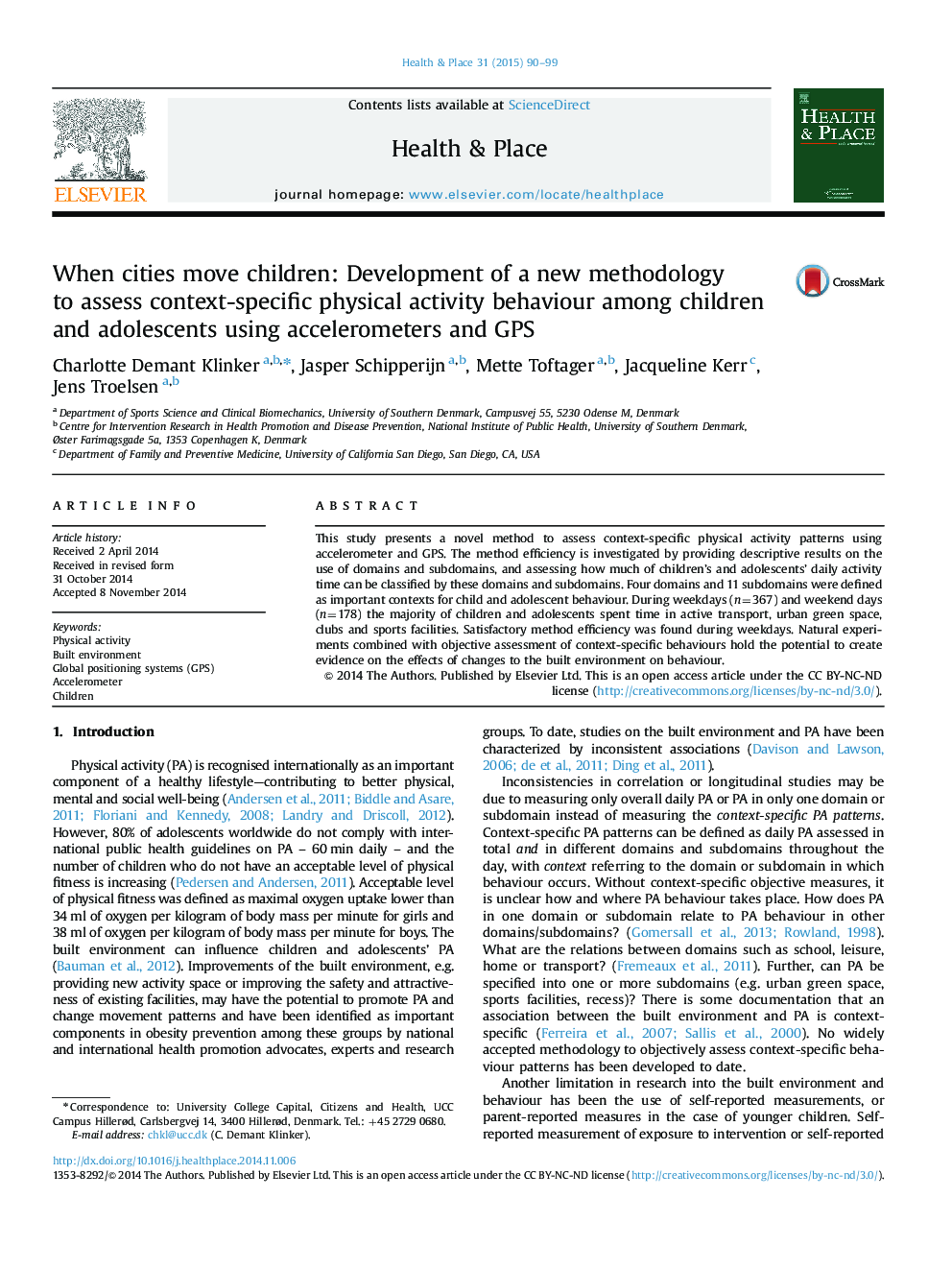| Article ID | Journal | Published Year | Pages | File Type |
|---|---|---|---|---|
| 7458292 | Health & Place | 2015 | 10 Pages |
Abstract
This study presents a novel method to assess context-specific physical activity patterns using accelerometer and GPS. The method efficiency is investigated by providing descriptive results on the use of domains and subdomains, and assessing how much of children's and adolescents' daily activity time can be classified by these domains and subdomains. Four domains and 11 subdomains were defined as important contexts for child and adolescent behaviour. During weekdays (n=367) and weekend days (n=178) the majority of children and adolescents spent time in active transport, urban green space, clubs and sports facilities. Satisfactory method efficiency was found during weekdays. Natural experiments combined with objective assessment of context-specific behaviours hold the potential to create evidence on the effects of changes to the built environment on behaviour.
Related Topics
Health Sciences
Medicine and Dentistry
Public Health and Health Policy
Authors
Charlotte Demant Klinker, Jasper Schipperijn, Mette Toftager, Jacqueline Kerr, Jens Troelsen,
